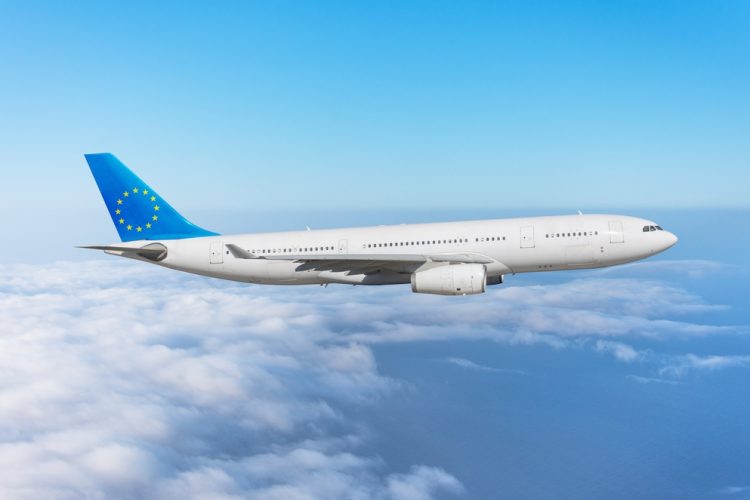ACI Europe launches its manifesto for the new EU political cycle
- Like
- Digg
- Del
- Tumblr
- VKontakte
- Buffer
- Love This
- Odnoklassniki
- Meneame
- Blogger
- Amazon
- Yahoo Mail
- Gmail
- AOL
- Newsvine
- HackerNews
- Evernote
- MySpace
- Mail.ru
- Viadeo
- Line
- Comments
- Yummly
- SMS
- Viber
- Telegram
- Subscribe
- Skype
- Facebook Messenger
- Kakao
- LiveJournal
- Yammer
- Edgar
- Fintel
- Mix
- Instapaper
- Copy Link
Posted: 24 January 2024 | International Airport Review | No comments yet
ACI EUROPE’s President Armando Brunini calls for EU Transport policy to ensure both sustainable and competitive air connectivity.


Airport industry launches its Manifesto for the new EU political cycle
ACI EUROPE’s President Armando Brunini calls for EU Transport policy to ensure both sustainable and competitive air connectivity – for passengers, communities and the planet.
Bringing together key political figures, policy makers and regulators together with industry representatives from the aviation and broader transport sectors, ACI EUROPE officially launched the airport industry’s contribution to the EU institutions and Member States on the future of transport policy – just as the EU is about to embark on a new political cycle spanning the next 5 years.
Presenting the manifesto, ACI EUROPE President Armando Brunini, who is also CEO of SEA Milan Airports, referred to sustainability and decarbonisation as “the mother of all challenges” – with disruptive EU Fit for 55 regulations driving a radical transformation of aviation. He warned about the significant socio-economic and competitive impacts involved, urging the EU to address what he referred to as “the EU Fit for 55 implementation challenge”:
“There is no doubt that the recently adopted SAF mandates, revised ETS rules and AFIR requirements are all needed to decarbonise aviation. But there is also no escaping the fact that these new rules are very disruptive and come with significant risks of reduced air connectivity and competitiveness. This will impact not just airports, but also the communities and regions they serve – with potentially far reaching consequences for cohesion and territorial equality. We are now facing a Fit for 55 implementation challenge – and that requires further adaptations and accompanying measures to make sure we effectively decarbonise without leaving any airport nor community behind.”
Accordingly, the primary strategic priority outlined by the ACI EUROPE Manifesto for EU transport policy is to enable the decarbonisation of aviation while at the same time preserving its socio-economic benefits through:
i) Effective regulatory and financial support to ensure SAF production in Europe meets both the SAF mandates set by EU law and voluntary commitments from airlines – and also bridge the price gap with conventional fuels.
This requires a raft of accompanying measures from the inclusion of SAF in the scope of the ‘strategic Net Zero Technology’ under the EU Net Zero Industry Act to the extension of both, the SAF Accounting flexibility and the SAF allowance mechanisms (under RefuelEU and EU ETS) and further financial support for the development of SAF.
ii) De-fragmenting Air Traffic Management and delivering the Single European Sky.
iii) Abolishing national aviation taxes so that the sector can afford to finance its transition.
iv) Preserving the ability of smaller and regional airports to receive operating aid under EU State Aid Guidelines.
v) Launching a dedicated EU Strategy on intramodality.
Brunini went on to summarise the other two key strategic priorities outlined by the ACI EUROPE Manifesto:
Safeguard and reinforce the integrity of the single aviation market
The EU Single Aviation Market is one of the greatest achievements of the EU. Whilst we are past the damages inflicted upon it by the COVID-19 pandemic, airline consolidation coupled with increasingly scarce airport capacity now involve significant market distortion risks.
“This requires a long overdue reform of EU airport slots rules1, while also standing by and protecting the fundamental principles of our Single Market: the full freedom of airlines to provide services and establish anywhere in the EU “ said Brunini who added: “Looking ahead, this also calls for reinforcing our global positioning through the development of more comprehensive aviation agreements – in particular with India, Brazil, Mexico, South Korea and Japan, along with visa facilitation regimes.”
Enable resilient, digitalised and green airports.
Brunini was adamant that as airports are increasingly moving from addressing those CO2 emissions under their direct control to facilitating CO2 reductions from aircraft, they need to prepare for the deployment of zero-emission aircraft: “Being green will require access by airports to massive volumes of renewable energy as well as the development of new on-site production, storage and distribution facilities. Such needs and transformations must be factored into the EU Energy policy – involving EU-wide assessments, planning and financial support. Ultimately, this is about supporting airports2 in moving from being transport hubs to also becoming energy hubs”.
Crucially, along with airports’ resilience and digitalisation agenda, this also requires addressing the investment crunch faced by Europe’s airports – which in turn necessitates:
- National regulators to fully abide by the ‘user pays’ principle as regards airport charges while also allowing the modulation of these charges based on CO2 emissions of aircraft – while ensuring regulatory stability at EU level.
- Allowing airports to sell goods duty free to arriving passengers.
Concluding his remarks, Brunini said: “Europe’s airports have long ago moved from being mere infrastructure providers to fully fledged and diversified businesses in their own right. Such transformation, enabled by the Single Aviation Market, has been instrumental in making our airports global champions for service quality and operational efficiency, route development and cohesion, as well as – most importantly – sustainability and climate action3.”
“With the new EU political cycle coming at a time when our aviation market has undergone significant structural changes and the whole sector faces the unprecedented challenge of decarbonisation, we must future proof our European airport model and its societal value – for passengers, communities and the Planet. This is what our Manifesto is about and we look forward to engaging with all institutional and industry stakeholders in the coming months.”
____________________
1 ACI EUROPE Position Paper on airport slots: https://go.aci-europe.org/e/1036123/ments-attachments-html-id-1961/3xtm25/326598781/h/Qy_kVuTru8ySM-hVaTTTtbNid8JbUI13AWwHh3hFtgQ
2 The investment crunch faced by Europe’s airports results from the combination of: i) their debt and liabilities having increased by nearly €40 billion compared to pre-pandemic (2019), ii) structural operating cost increases due to inflationary pressures and iii) suboptimal and below inflation increases in aeronautical revenues (as of October 2023, airport charges at Europe’s airports had on average increased by just +13.6%.)
3 289 airports accounting for almost 80% of European passenger traffic are certified under Airport Carbon Accreditation. Last year, these airports achieved a CO2 reduction of -450.000 tonnes (-20%). 130 of these airports have set a target date by 2030 or earlier for achieving net zero from CO2 emissions under their direct control. For more information, visit Airport Carbon Accreditation.
Related topics
Economy, Passenger experience and seamless travel, Regulation and Legislation, Sustainable development


















